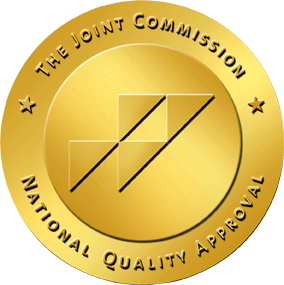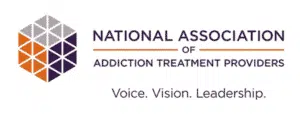The Effects of Alcohol Use in the Workplace
Alcohol use disorder, or AUD, is a medical condition that describes an inability to control or stop alcohol use despite negative consequences. These consequences can be social or related to health or occupation. AUD includes alcohol abuse, dependence and addiction. It’s considered a brain disorder, and it can be diagnosed as mild, moderate or severe.
According to the National Institute on Alcohol Abuse and Alcoholism (NIAAA), there are nearly 29 American adults with an alcohol use disorder. There are also several million more adults who engage in dangerous drinking patterns, such as binge drinking, that could lead to alcohol issues.
Societal costs due to alcohol misuse are staggering. They include health care costs, traffic accidents, personal problems, and reduced work productivity. There are many reports that look at issues of the workplace costs of alcoholism and alcohol misuse. Costs range from $33 billion to $68 billion a year.
Alcohol misuse is linked to high employer costs. These expenses stem from absenteeism, low productivity, turnover, high healthcare costs and workplace accidents. More than 15% of U.S. workers report being impaired by alcohol use at least once during the past year. Additionally, 9% of workers said they were hungover at work.

It's time to get your life back.
Whether you are struggling with addiction, mental health or both, our expert team is here to guide you every step of the way. Don’t wait— reach out today to take the first step toward taking control of your life.
Alcoholism in Full-Time Employees
Alcohol is the most frequently misused substance in the workplace. It’s estimated that between 10% and 30% of employees consume alcohol at what’s considered a risky level. These individuals could benefit from interventions to prevent further alcohol issues.
Employee alcohol use is linked to several issues, including:
- More absences from work
- Impaired job performance
- Physical and verbal aggression on the job
- Occupational injuries
The prevalence, frequency and intensity of binge drinking and alcohol misuse tend to vary based on individual characteristics. For example, young adults between the ages of 18 and 34 are more likely to engage in intense binge drinking compared to older age groups. The prevalence of binge drinking also tends to go up with higher education and household income levels.
In a national study, 17.5% of mining workers and 16.5% of construction workers reported high levels of alcohol use within the past month. Behind them were workers in arts and entertainment, as well as food services and accommodations. There are also state-related differences in workplace alcohol misuse. For example, in North Dakota, employees on ranches or farms had the highest levels of binge drinking On the other hand, healthcare workers had the lowest. Additionally, installation and construction workers in California had the highest reported levels of binge drinking However, professional workers had the lowest in the Golden State.
Signs & Symptoms of Alcoholism in the Workplace
Some of the potential signs and symptoms of alcoholism in the workplace can include:
- Unexplained or unauthorized absences
- Tardiness
- Excessively using sick leave
- Patterns of absence, like frequent Monday or Friday absences or being absent the day after payday
- Frequent unplanned absences because of “emergencies”
- Missed deadlines
- Not meeting production quotas
- Careless or sloppy quality of work
- Problematic relationships with coworkers
- The employee may be short-tempered or argumentative, especially after weekends, holidays, or in the morning.
- Receiving calls at work from collection companies or creditors
- Smelling like alcohol
- Bloodshot eyes
- Mood or behavioral changes
- Tremors
- Staggering
- Excessive use of mints or mouthwash
- Sleeping on duty
These signs don’t mean an employee has an alcohol use disorder automatically. However, if patterns are becoming more apparent, it could be a red flag. That is why early intervention is so important. Serious safety issues can emerge in the workplace if an alcohol use disorder is present and worsening. As a result, the employee and other coworkers could be in danger.
Causes of Alcoholism in the Workplace
Many reasons for alcohol misuse have nothing to do with the workplace environment. Still, it can also be a trigger or could lead to problems with alcohol. For example, the following are some of the causes of alcoholism that directly relate to the workplace:
- Stress and job dissatisfaction: Alcohol can become a coping mechanism for a high-stress work environment or when someone is unhappy with their job.
- Alienation and a toxic work environment: Negative work environments can lead to burnout and work-related fatigue. If someone is struggling with this at work, they could use alcohol to cope. Toxic work environments, burnout and other related factors also affect mental health and well-being. This can then contribute to unhealthy alcohol use.
- Work cultures that promote drinking: Sometimes, a work culture encourages drinking. This could be at on-the-job events or after work.
High-Risk Occupations
Industries with high rates of alcohol use include:
- Mining
- Construction
- Hospitality and food services, which can include bartending
- Arts, entertainment and recreation
- Utilities
- Wholesale trade
- Management
- Manufacturing
How Alcoholism Hurts the Workplace
Alcoholism affects the entire workplace, and not just the person struggling with it. Effects, along with the financial losses that come with lost productivity and absenteeism, include:
- Increased risk of disability leave for mental illness, especially depression.
- Higher levels of workplace injuries. Alcohol affects vision, reaction time, motor skills, abilities and judgment. According to the Centers for Disease Control and Prevention (CDC), alcohol is a factor in 18% of workplace injuries.
- Negative effects on workplace relationships. These can include aggressive behaviors with supervisors and coworkers.
How Alcoholism Hurts the Company
When a company is dealing with an employee who struggles with alcohol misuse, it can mean everyone is less able to perform their duties. In turn, this can negatively affect larger business objectives and goals. Production goals may not be met, and there could be a lot of missed deadlines. The work that is done could be sloppy, careless or incomplete. Employees who can’t meet expectations and behave erratically affect the company’s entire culture. Ultimately, this could lead to the loss of other employees.
There can be legal problems if an employee is misusing alcohol and their judgment is impaired. Putting themselves, other employees and customers at risk can lead to legal consequences as well. All of these can become reputational risks for the entire company. Depending on the severity of the situation, it could be difficult to come back from the damaged reputation.
How the Organization Can Help
An HR representative or supervisor can initially meet with the employee to point out concerning behaviors. If the employee is open to it, the HR rep can help the person seek treatment. It’s important for employers to keep clear documentation of their concerns and to include specific examples. Employers should always meet privately with the employee away from coworkers and give them a chance to talk about what’s going on.
The use of alcohol and substances in the workplace is a growing problem. The Employee Assistance Program (EAP), which began in the 1940s, can help employers to address workplace alcohol misuse. Since the EAP was created by the National Council on Alcoholism and Drug Dependence (NCADD), millions of people with alcohol use disorders have received help for unhealthy drinking behaviors. A company EAP is an efficient way to combat alcohol and substance use in the workplace. What an EAP does is help employees and their family members access needed resources for recovery.
By connecting employees with help, it reduces the overall negative impact of alcoholism in the workplace. Guiding an employee to get the help they need can lower healthcare costs, reduce employee turnover and improve overall productivity and workplace culture.
Alcohol Addiction Treatment Options
Alcohol addiction is a serious chronic disease. However, there are many treatment programs and options available to meet a range of needs. For example, residential programs can greatly benefit those with severe alcohol use disorders.
Residential treatment might begin with a medically managed detox to help the person go through withdrawal safely. Residential rehab then provides a structured environment to delve into the root causes of their alcohol addiction. There are also outpatient programs that provide various treatments while allowing the person to return home in the evenings.
It can be challenging for someone with an alcohol use disorder to stop drinking without professional treatment. In fact, it can even be dangerous. That is why a professional program is the best way to begin a recovery journey. A good treatment plan will also have detailed aftercare plans. These will continue supporting the person as they return to their daily lives, including the workplace.
Get Help for Alcohol Addiction Today at The Recovery Village Kansas City Drug and Alcohol Rehab
The Recovery Village Kansas City Drug and Alcohol Rehab leads the way in compassionate, evidence-based addiction treatment. We are part of one of the nation’s most extensive treatment networks. Our expert-led programs are guided by research and a holistic approach to treating addiction. Please contact our Recovery Advocates today to learn more about our programs or begin a same-day admissions process.











